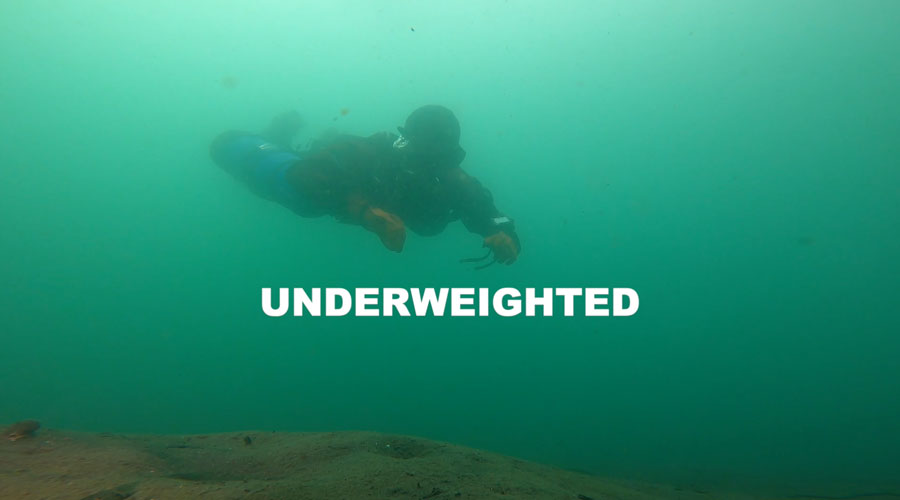Everyone has struggled with trim and buoyancy at some point in their scuba diving career. One of my Patrons asked for buoyancy tips while maintaining a calm breathing pattern, so let’s cover the basics, plus a short breathing exercise to help you maintain your position in the water.
If you prefer to watch and learn, click on the video:
Let’s talk about what affects buoyancy
Each person’s physiology will determine how much you naturally sink or float.
Then there’s the scuba equipment. Your exposure suit is a big variable, but other factors include BCDs (especially heavy backplate and wing set ups) and fins.
We combat our floatiness with lead weight either on a weight belt or integrated into our BCDs. You will have to take in all the previous factors, plus your environment to determine the weight you need to carry. Less weight is required for fresh water than the ocean. Also, some seas are saltier than others and will require a little more weight.
Top tips for improving buoyancy and trim
Trust your equipment and fully exhale
This first one is for beginners. When we learn how to dive, it takes a while to trust our equipment. Without realizing it, beginners will keep air in their lungs, using a shallow breathing pattern because there is still anxiety about being under water. A great example is when you struggle to descend at the beginning of the dive but remember to fully exhale and voilà: Down you go.
Add the right amount of weight
This, of course, can only happen when a scuba diver carries the proper weight. For the most part, divers are overweighted. If you notice that you have the body position of a little seahorse, then that’s the telltale sign of being overweighted. Another indicator is the amount of air you need to get neutrally buoyant during a regular recreational dive. If you get neutrally buoyant, but your position changes drastically with normal breathing, you have too much air in your BCD, which is compensating for wearing too much weight.
You can do a weight check at the surface before and after a dive to see how much lead you really need.
Get the right equipment
Scuba diving trim is all about fine tuning things, and what works for one diver may not work for all divers. If possible, I recommend talking to other divers who dive in similar conditions and trying different equipment before buying your own gear. That way, you can figure out what you need. For example, you can test out the difference between BCD styles or (and this is a big one for people) positive, neutral, or negatively buoyant fins. As a side note, I personally do not recommend ankle weights when dealing with floaty feet syndrome.

Distribute weights for better underwater position
There several places to store weight on your BCD, which will help with trim adjustments. Only focus on this part once you have found your ideal weight.
Breathe normally, only using deep breaths to change position in the water
I use belly breaths while scuba diving, which relaxes the torso and allows for slow, efficient breathing. My normal breath is around half the volume of my lung capacity, and I focus on long, slow exhalations. Extending the exhale triggers the parasympathetic nervous system, which has a calming effect and will ultimately help with improving air consumption. Then, when I need to go up or down in the water column, I use larger inhalations and exhalations.
Work your muscles
Finally, there is some strength training required for really nice trim position in the water. I teach divers to have a horizontal position with legs lifted, utilizing the frog kick. This is not available to all divers and must be adjusted according to physical abilities or injuries. I prefer this position because it teaches people to keep their feet off the reef, but it does require some low back and glute work. The standard diving position with legs straight behind the body, using the butterfly kick, is perfectly fine as long as you stay far enough away from the reef.

What were the tips that helped you fine tune your buoyancy?
I love teaching buoyancy and trim to people because this is the stuff that really makes you feel like an astronaut. Feeling neutrally buoyant and becoming part of the underwater world are some of the main things that make people addicted to this sport. It’s fun and freeing.








